Last Chance to Catch NYC's Holiday Notalgia Train
We met the voices of the NYC subway on our nostalgia ride this weekend!


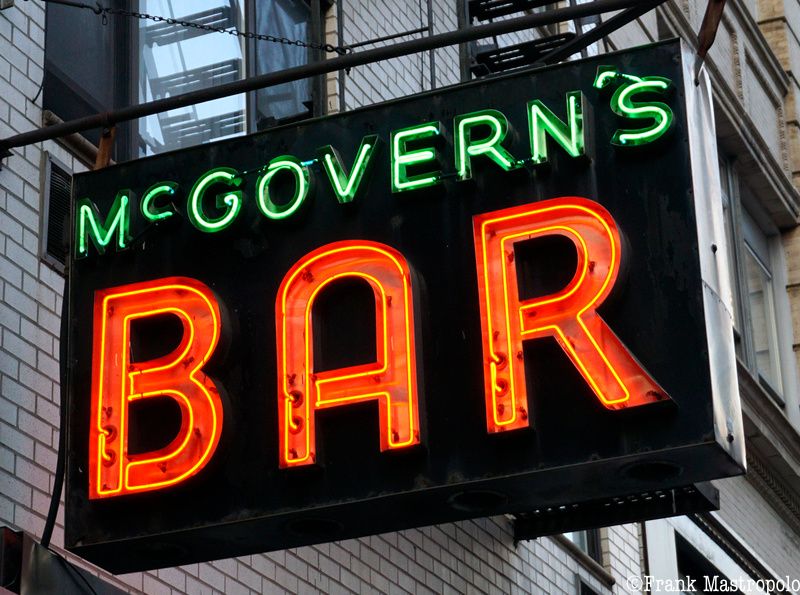
Viewed from above, Manhattan’s skyline makes it seem like an island of skyscrapers. But a walk south of 14th Street reveals brownstones, row houses and tenements, many built before World War II. Their walls often display ghost signs — vintage ads that offer clues to the bars, restaurants, pharmacies, shops, and industries of a forgotten time.
Some ghost signs survive for decades thanks to retailers who decline to take them down. McGovern’s Bar in Soho, opened in the early 1960s, has been closed for decades. The businesses that followed — Paul’s Casablanca is the latest — have kept its neon sign illuminated. Uptown Manhattan and Brooklyn have fascinating arrays of ads but Downtown’s streets offer some of the city’s oldest ghost signs.
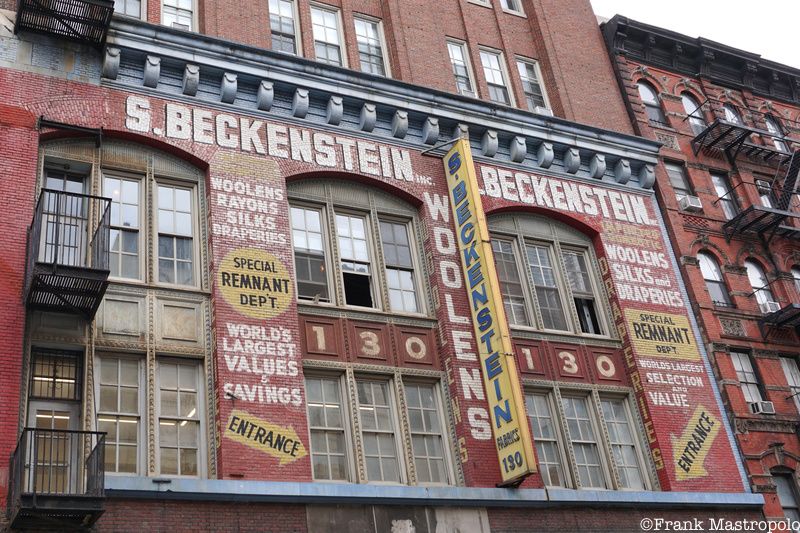
“Orchard Street, just north of Delancey. is the place to go for a pair of pants to match a still serviceable coat and vest,” reported the Albany (MO) Capital in 1941. “As you approach the corner of Orchard and Delancey, a barrage of signs directs you to Beckenstein’s which occupies three crowded floors, a basement, and an annex across the street.”
Samuel Beckenstein, an immigrant from Poland, arrived in New York in 1910. From his start as a pushcart merchant, the entrepreneur established Beckenstein’s Men’s Fabric in 1919. Beckenstein created a business that catered to men who could not afford a new suit when the pants wore out. Beckenstein bought leftover fabric from men’s suit manufacturers and made pants that exactly matched the jackets of suits. By the 1930s, Beckenstein advertised his business as the “World’s Largest Pants Matching House.”
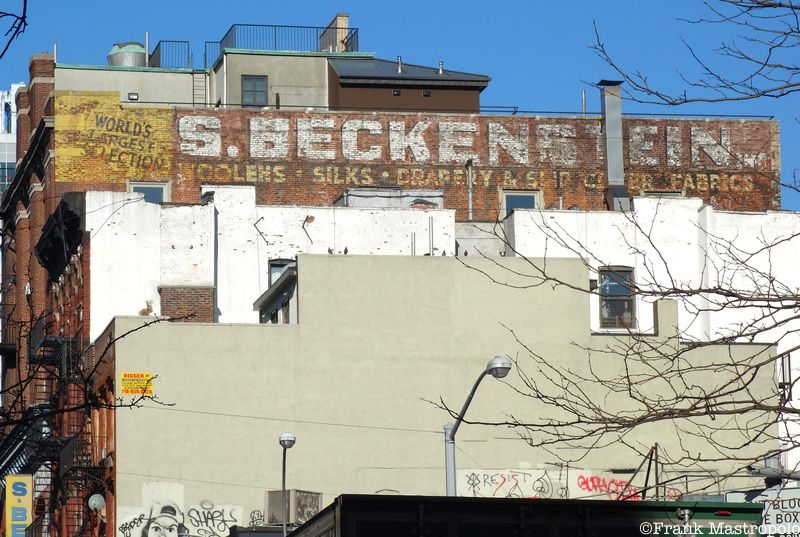
In 1945 the company moved to the former New York Telephone Company building on Orchard Street. Beckenstein covered the second and third floors with signage. Another sign across the roofline was once visible for blocks to the south. New construction on Delancey Street now obscures it. In time, fabric businesses departed Orchard Street, replaced by coffee shops, bars, and leather and hat shops. Beckenstein was the last holdout, but by 1999 moved uptown and is now part of Fabric Czar. The Perrotin gallery moved into the building in 2017 and incorporated its name into the Beckenstein facade.
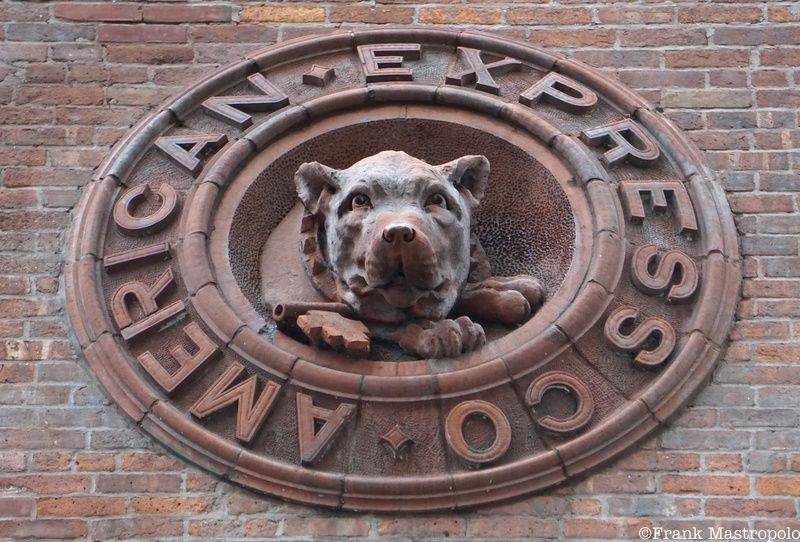
In its earliest days as an express delivery company, the symbol of American Express was a watchdog. “The American Express watchdog logo first appeared in the late-1850s on delivery receipts and promotional materials,” said Ira Galtman, Director of Corporate Archives. “The dog represented safety and security, which were critical to the success of our express business. We used different versions of the watchdog logo until the end of the 19th century.”
Founded in Albany in 1850, American Express opened its first headquarters in New York City at 10 Wall Street. As local deliveries were made by horse-drawn carriages, a stable was built in what is now Tribeca in 1866. A terra-cotta watchdog guarding the key to a lockbox is high on the Hubert Street facade. Architect Edward Hale Kendall designed the 1898-1899 expansion of the building to Laight Street, which features an updated watchdog logo.
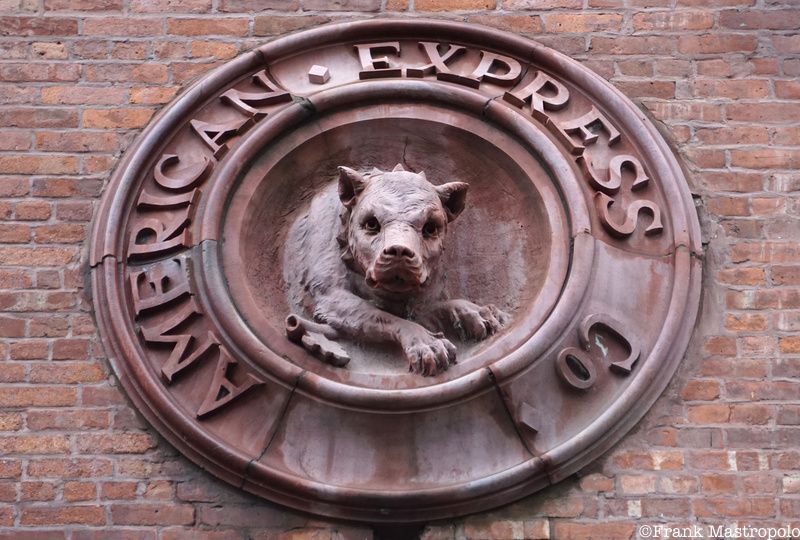
By the time the parcel post system was established in 1913, American Express had already begun its transition to a financial services company. Horse-drawn carriages became extinct and American Express moved from the building in 1918.
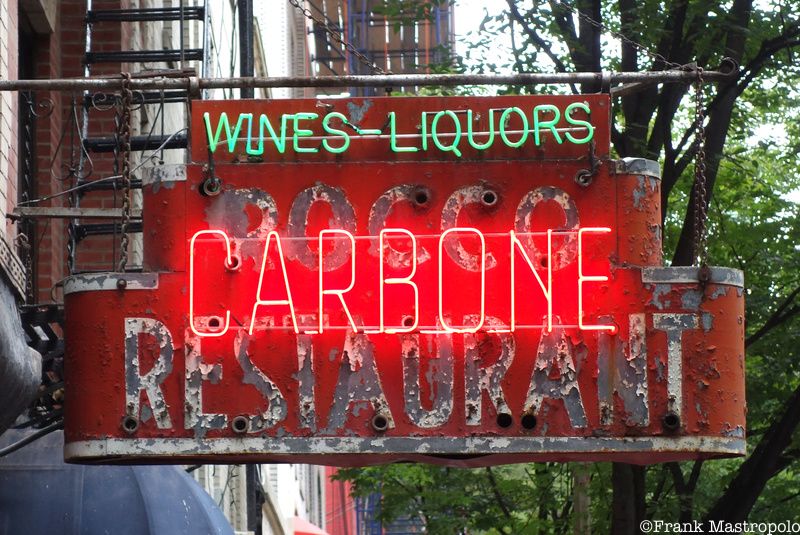
Rocco Restaurant opened in 1922 in Greenwich Village, a three-generation restaurant serving southern Italian food. Owner Rocco Stanziano ran the restaurant until 1966 when nephew Gianni Respinto took over. In 1992, Respinto’s nephew Antonio DaSilva continued the restaurant’s reputation for great food and great prices. Rocco closed in 2011 after its landlord demanded $18,000 a month in rent, up from $8,000. “It’s too much for what we could afford,” DaSilva told Eater in 2011. “I can afford a little more but $18,000 and I’m working for him.”
Chefs Mario Carbone and Rich Torrisi and their partner Jeff Zalaznick acquired the space and opened it as Carbone. In 2013 Zalaznick told Eater, “Unfortunately, this restaurant was closing one way or another. What shocks me is that, given all the other things this could have become, you would think that someone that pays tribute to its history is the best use of it. It’s not a Duane Reade.” DaSilva said the neon sign was probably installed when the restaurant opened. The original sign has been retained. The “Wines-Liquors” neon has been restored but the neon tubing illuminating the Rocco Restaurant name has been removed, replaced by “Carbone.”
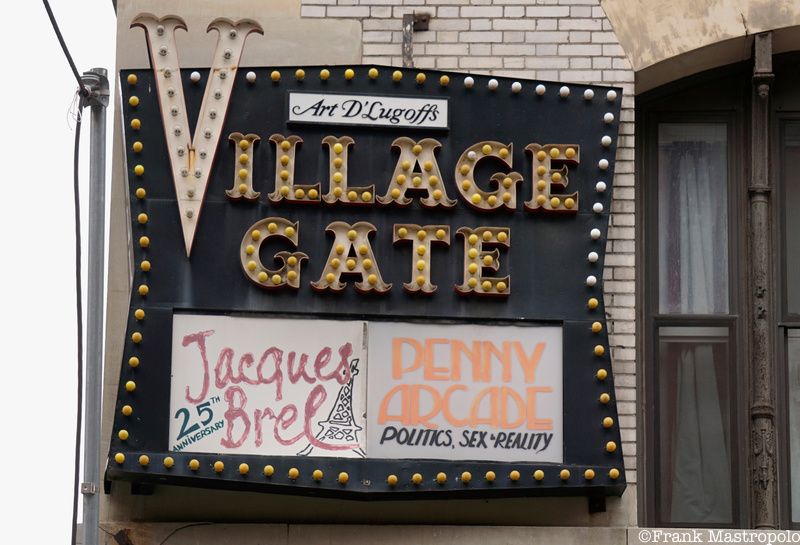
“Ran over to Art D’Lugoff’s recently-established Village Gate,” show business columnist Alfred Duckett noted in the New York Age in 1958. “It’s a unique place, even in the unique Village. You go through large iron gates on Thompson Street, down some steps, through a courtyard and you’re in. It’s a tremendous place — 450 seating capacity — has that make-yourself-at-home atmosphere.”
Impresario Art D’Lugoff opened the Village Gate on the ground floor and basement of the former Mills House No. 1, a hotel for men down on their luck. D’Lugoff featured the cream of rock, jazz, folk, and Latin music along with comedy and theatrical shows. The club presented stars that included Jimi Hendrix, John Coltrane, Ella Fitzgerald, Duke Ellington, Lenny Bruce, Aretha Franklin, Miles Davis, Nina Simone, Pete Seeger, and Thelonius Monk before it closed in 1994. The Village Gate ghost sign that hangs above Bleecker Street displays placards for two of D’Lugoff’s favorite shows: Jacques Brel Is Alive and Well and Living in Paris and performance artist Penny Arcade’s Politics, Sex & Reality.
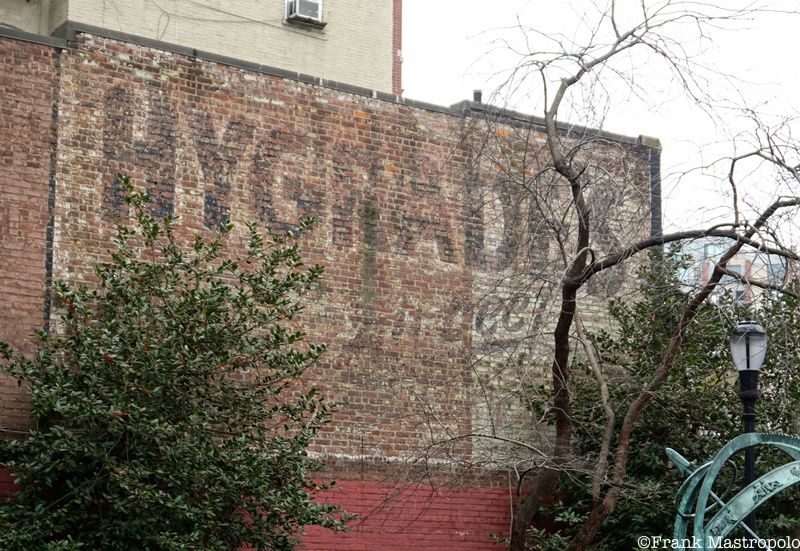
Journalist and muckraker Upton Sinclair’s 1906 novel The Jungle described the unsanitary health practices of the American meat industry in the early 20th century. The account inspired Samuel Slotkin, a Russian immigrant, to create a business selling pre-packaged meats and meat products. Slotkin merged his company with eight others to form Hygrade Food Products in 1927. “Mr. Slotkin’s first loyalty was always to the quality frankfurter,” notes Slotkin’s 1965 New York Times obituary. “Early in his career he frowned on mixing meats in frankfurters and developed an all-beef frankfurter.”
“The reason that Hygrade Frankfurters are so unusual in goodness is because they are made entirely of beef — tender, juicy cuts of fresh Government-inspected beef such as you buy for your own table,” read a 1935 ad in the Brooklyn Daily Eagle. The Hygrade ad in Greenwich Village overlooks Sir Winston Churchill Square, a half-acre garden and sitting area designed by George Vellonakis. The square was rebuilt in 1998-1999, adding a garden, an armillary sphere, and a decorative fence. Hygrade continued its success in 1975 when it developed Ball Park Franks for baseball’s Detroit Tigers. Its slogan: “They plump when you cook them.” Ball Park Franks became a national brand and led to Sara Lee’s acquisition of Hygrade in 1989.
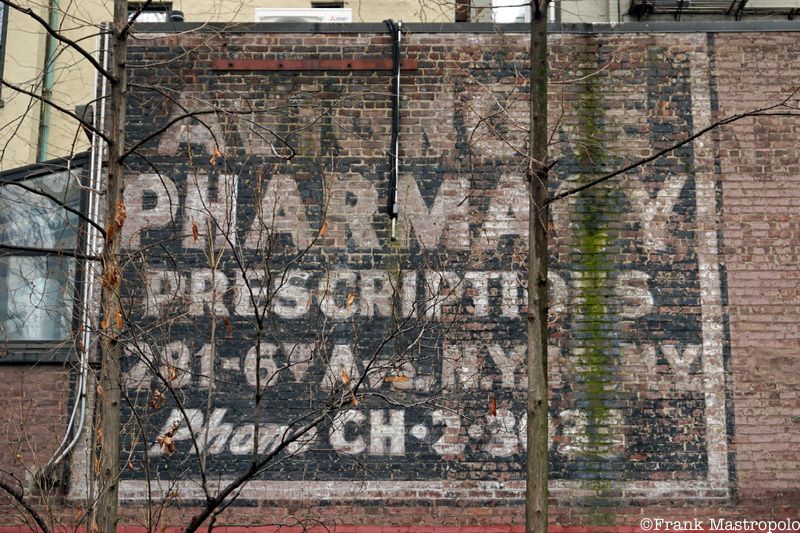
When the proudly anti-chain Avignone Pharmacy closed in 2015, it was one of the oldest drug stores in New York City. Its roots go back to 1832 when Stock Pharmacy was founded at 59 MacDougal Street. That pharmacy was demolished in the 1930s when Houston Street was widened. Italian immigrant Francis Avignone bought the business in 1898 and changed its name to Avignone Pharmacy. In 1929, Avignone moved the pharmacy to the Greenwich Village building that displays his ad alongside Hygrade’s. Ghost signs historian Walter Grutchfield dates the sign to the early 1950s because “the telephone number CH 2-3033 appears for the first time in the Manhattan telephone directory in 1952. Earlier the number was CH 2-6715.”
Avignone’s son Carlo ran the business from 1956 until it was sold in 1974. Abe Lerner owned and operated Avignone for 30 years but was forced to close its doors in 2015 when the landlord tripled his rent. “I’ve spent half my life here,” Lerner told DNAInfo. “I’ve known many of these people for 30 years; I’ve seen a lot of kids grow up. A lot of these people have become friends – they’re not just customers, they’re friends. The store has become a place where people just come in to say hello, not even to buy anything,” said Lerner. “They just come in to chat and then go out again. It’s been a neighborhood staple since 1929.”
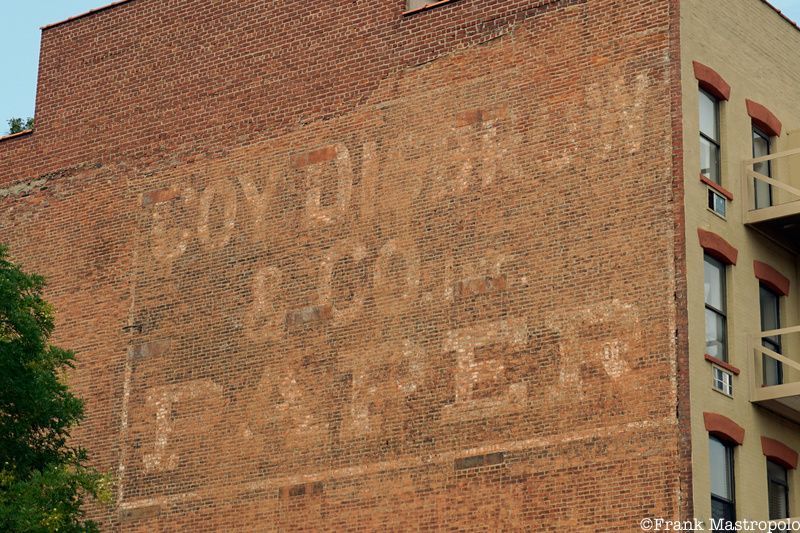
Proximity to the Hudson River and the Ninth Avenue elevated train, which ran down Greenwich Street, made the West Village an ideal spot for wholesale paper and twine dealers Coy Disbrow. Robert Henry Coy and Hamilton Thomas Disbrow founded the company on Canal Street in 1922.
Coy Disbrow moved to its Greenwich Street location in 1930. The five-story building was built as a tenement with a ground-floor commercial space in about 1868. Its huge south-facing wall displays Coy Disbrow’s ghost sign. Both Coy and Disbrow died in 1942. The company relocated to Lafayette Street in 1968 when it became part of the George W. Millar Co. The building was converted to apartments in 1977.
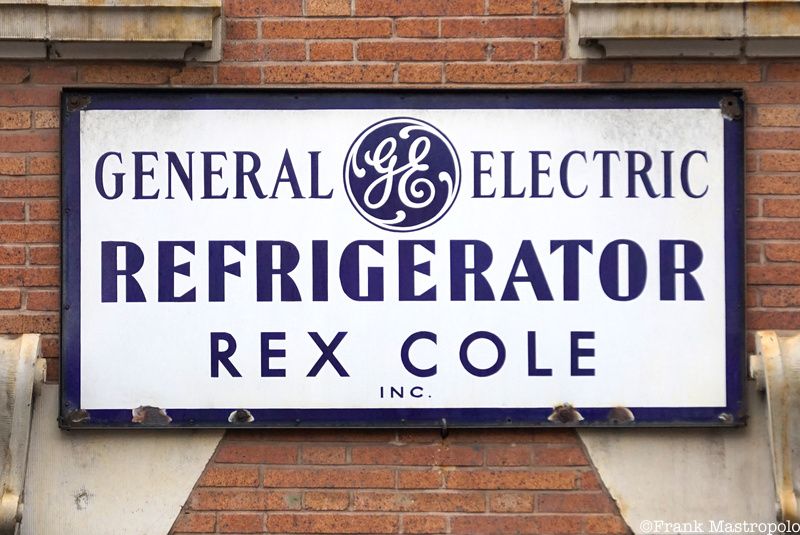
Inventor and master salesman Rex Cole was chosen by General Electric in 1926 to promote its new line of Monitor Tops, the first electric refrigerator on the market. The Monitor Top housed the motor, compressor, and condenser on the top of the cabinet. Cole, nicknamed “King Cold,” opened appliance showrooms across New York City and its suburbs. Cole hired architect Raymond Hood to design futuristic showrooms with large plate-glass window displays. Cole also mounted blue-and-white enamel signs that feature the GE logo on low-rise buildings throughout the city. By 1931 Cole employed more than 1,000 people and boasted $15 million in sales. But few people could afford new refrigerators during the Great Depression and Cole filed for bankruptcy in 1935 and closed many of his stores.
Two of the remaining metal signs survive in the East Village thanks to building owner Charlotte Storper. Her husband Sidney died in 2000 and when Mrs. Storper had the building’s facade cleaned in 2001, she ensured that the two Rex Cole signs on the building remained. Storper told the New York Times that she and her husband bought the building in the 1950s. ”We kept it all through the years, through the flower children and the ups and downs of the ’60s and ’70s,” she said. ”At one point I said the signs were unsightly, but he said, ‘Those signs are a part of history.'” Cole kept the business going on a much smaller scale into the 1950s. Cole was working on a new lamp design, the Rex Cole Eye-Saver when he died in 1967 at 86.
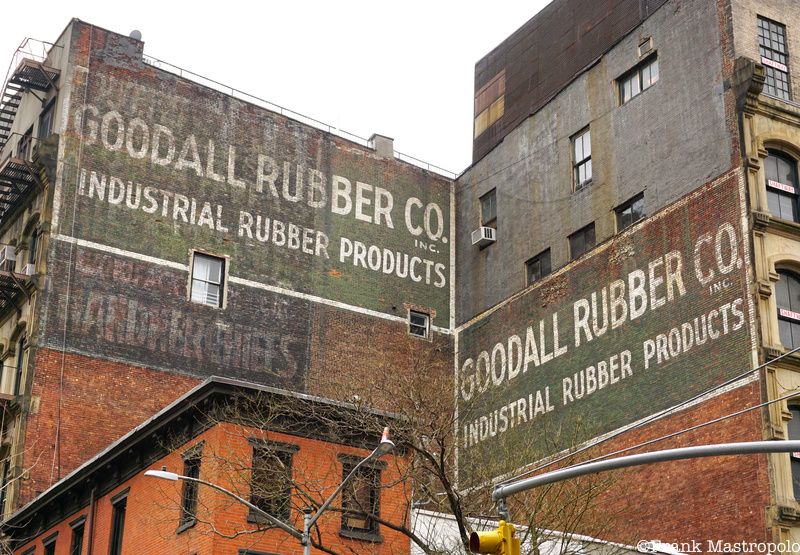
”If you have used ‘Goodall Semi-Metallic’ Hose (the only hose that combines maximum flexibility with maximum durability) or Goodall Rubber Belting (unaffected by dampness or dust — always dependable), you know the efficiency and economy of Goodall products,” read a 1921 ad in Philadelphia’s Evening Public Ledger. “If you have yet to learn how Goodall can cut down operating costs for you, do it now.” Two huge signs for Goodall Rubber dominate its Tribeca corner. Goodall moved here in the late 1930s, where it sold rubber hoses, tubing, belts, and protective clothing that included boots, gloves, and aprons. The sign on the White Street building is a palimpsest; the Goodall ad is painted over a barely legible sign for a “Manufacturer of Handkerchiefs.”
Goodall was founded in Philadelphia at the turn of the 20th century by Howard W. Goodall, William S. Feeny, and Frederick D. Stovell. Goodall sold Goodall Rubber in 1924. The company remained in the building until the 1970s when it moved to New Jersey.
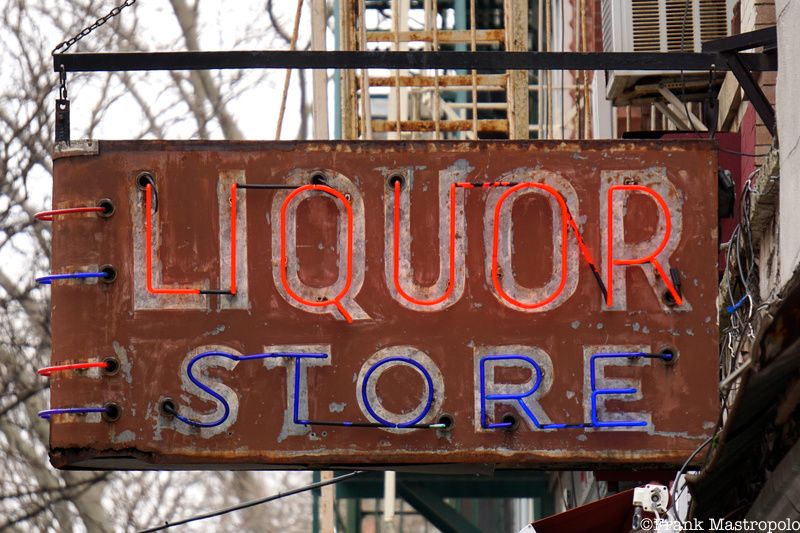
The small brick-and-wood house in Tribeca that displays a 1940s-era liquor store sign was built in 1809 by Gideon Tucker, a school commissioner who ran a nearby plaster factory. Rev. Theodore S. Wright, a prominent abolitionist, lived here from 1842–1847.
Wright used the house as a stop on the Underground Railroad, the network of abolitionists who helped African Americans move north to New England and Canada and escape slavery in the South. In the early 20th century the ground-floor retail space served as a cigar shop, travel agency, footwear shop, and barber shop.
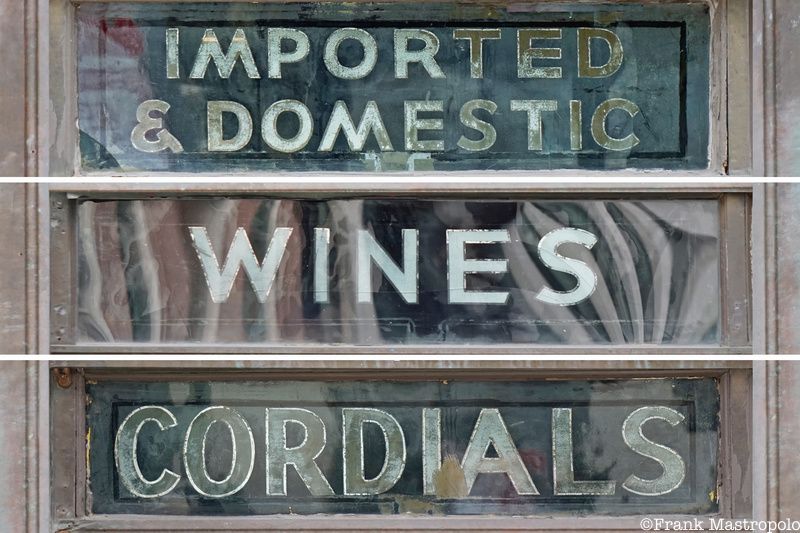
In 1941, Leonard Hecht founded Hecht Liquors in the Gideon Tucker House. Its surviving neon sign simply reads, “Liquor Store.” Hand-painted glass panes are displayed above the storefront windows.
In the 1990s the Hecht family, which owned the building, closed the shop. Its next tenant, the Liquor Store Bar, adopted the name on the sign. The tavern lasted 10 years until its liquor license was revoked because of its proximity to a house of worship. Menswear retailer Todd Snyder has preserved the ghost signage.
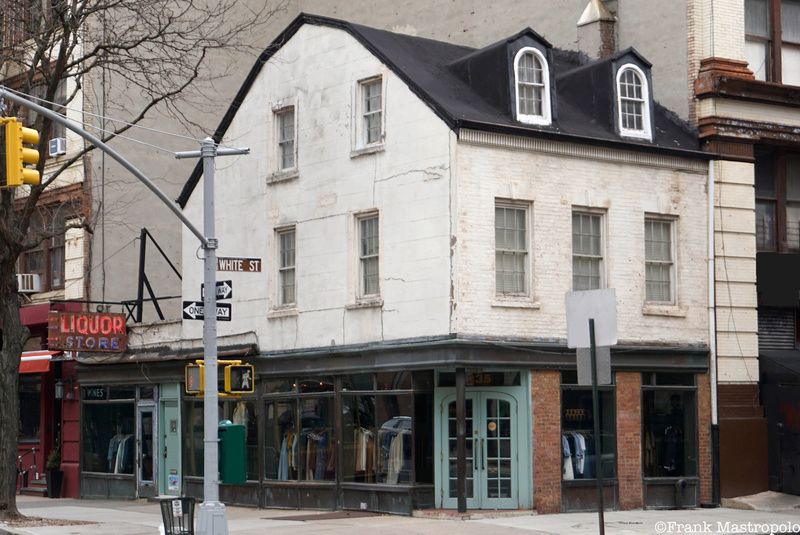
A wealth of forgotten ads can be found in Mastropolo’s books on Uptown and Downtown Manhattan ghost signs. Music fans, check out the author’s books on legendary concert venue Fillmore East and a comprehensive history of rock in NYC. Next, check out the authors’ Untapped articles on The Forgotten Theaters and Haunts of Actor Jackie Gleason and East Village Ghosts Signs That Reveal the History of Avenue A
Subscribe to our newsletter